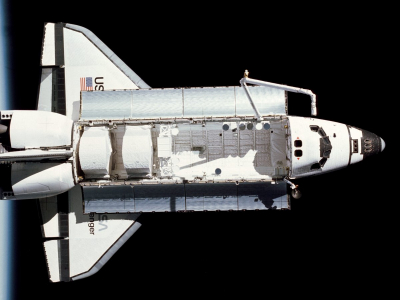Kathryn Dwyer Sullivan (born October 3, 1951) is an American geologist and oceanographer, and a former NASA astronaut and US Navy officer. She was a crew member on three Space Shuttle missions.
A graduate of University of California, Santa Cruz in the United States, and Dalhousie University in Nova Scotia, Canadawhere she earned a Doctor of Philosophy degree in geology in 1978Sullivan was selected as one of the six women among the 35 astronaut candidate in NASA Astronaut Group 8, the first group to include women. During her training, she became the first woman to be certified to wear a United States Air Force pressure suit, and on July 1, 1979, she set an unofficial sustained American aviation altitude record for women. During her first mission, STS-41-G, Sullivan performed the first extra-vehicular activity (EVA) by an American woman. On her second, STS-31, she helped deploy the Hubble Space Telescope. On the third, STS-45, she served as Payload Commander on the first Spacelab mission dedicated to NASA's Mission to Planet Earth.
Sullivan was Under Secretary of Commerce for Oceans and Atmosphere and Administrator of the National Oceanic and Atmospheric Administration (NOAA) after being confirmed by the US Senate on March 6, 2014. Her tenure ended on January 20, 2017, after which she was designated as the 2017 Charles A. Lindbergh Chair of Aerospace History at the Smithsonian Institution's National Air and Space Museum, and also served as a Senior Fellow at the Potomac Institute for Policy Studies. On June 7, 2020, Sullivan became the first woman to dive to the Challenger Deep in the Mariana Trench, the deepest part of the Earth's oceans. In September 2021, President Joe Biden appointed her to the President's Council of Advisors on Science and Technology.
Space Shuttle Challenger (OV-099) was a Space Shuttle orbiter manufactured by Rockwell International and operated by NASA. Named after the commanding ship of a nineteenth-century scientific expedition that traveled the world, Challenger was the second Space Shuttle orbiter to fly into space after Columbia, and launched on its maiden flight in April 1983. It was destroyed in January 1986 soon after launch in an accident that killed all seven crewmembers aboard. Initially manufactured as a test article not intended for spaceflight, it was utilized for ground testing of the Space Shuttle orbiter's structural design. However, after NASA found that their original plan to upgrade Enterprise for spaceflight would be more expensive than upgrading Challenger, the orbiter was pressed into operational service in the Space Shuttle program. Lessons learned from the first orbital flights of Columbia led to Challenger's design possessing fewer thermal protection system tiles and a lighter fuselage and wings. This led to it being 1,000 kilograms (2,200 pounds) lighter than Columbia, though still 2,600 kilograms (5,700 pounds) heavier than Discovery.
During its three years of operation, Challenger was flown on ten missions in the Space Shuttle program, spending over 62 days in space and completing almost 1,000 orbits around Earth. Following its maiden flight, Challenger supplanted Columbia as the leader of the Space Shuttle fleet, being the most-flown orbiter during all three years of its operation while Columbia itself was seldom used during the same time frame. Challenger was used for numerous civilian satellite launches, such as the first tracking and data relay satellite, the Palapa B communications satellites, the Long Duration Exposure Facility, and the Earth Radiation Budget Satellite. It was also used as a test bed for the Manned Maneuvering Unit (MMU) and served as the platform to repair the malfunctioning SolarMax telescope. In addition, three consecutive Spacelab missions were conducted with the orbiter in 1985, one of which being the first German crewed spaceflight mission. Passengers carried into orbit by Challenger include the first American female astronaut, the first American female spacewalker, the first African-American astronaut, and the first Canadian astronaut.
On its tenth flight in January 1986, Challenger disintegrated 73 seconds after liftoff, killing the seven-member crew of STS-51-L that included Christa McAuliffe, who would have been the first teacher in space. The Rogers Commission convened shortly afterwards concluded that an O-ring seal in one of Challenger's solid rocket boosters failed to contain pressurized burning gas that leaked out of the booster, causing a structural failure of Challenger's external tank and the orbiter's subsequent disintegration due to aerodynamic forces. NASA's organizational culture was also scrutinized by the Rogers Commission, and the Space Shuttle program's goal of replacing the United States' expendable launch systems was cast into doubt. The loss of Challenger and its crew led to a broad rescope of the program, and numerous aspects of it – such as launches from Vandenberg, the MMU, and Shuttle-Centaur – were scrapped to improve crew safety; Challenger and Atlantis were the only orbiters modified to conduct Shuttle-Centaur launches. The recovered remains of the orbiter are mostly buried in a missile silo located at Cape Canaveral LC-31, though a single piece is on display at the Kennedy Space Center Visitor Complex.

1984Oct, 11
Aboard the Space Shuttle Challenger, astronaut Kathryn D. Sullivan becomes the first American woman to perform a space walk.
Choose Another Date
Events on 1984
- 7Jan
Association of Southeast Asian Nations
Brunei becomes the sixth member of the Association of Southeast Asian Nations (ASEAN). - 5Jun
Indira Gandhi
The Prime Minister of India, Indira Gandhi, orders an attack on the Golden Temple, the holiest site of the Sikh religion. - 4Aug
Burkina Faso
The Republic of Upper Volta changes its name to Burkina Faso. - 20Sep
Beirut
A suicide bomber in a car attacks the U.S. embassy in Beirut, Lebanon, killing twenty-two people. - 26Sep
Transfer of sovereignty over Hong Kong
The United Kingdom and China agree to a transfer of sovereignty over Hong Kong, to take place in 1997.

 English
English  español
español  français
français  português
português  русский
русский  العربية
العربية  简体中文
简体中文 